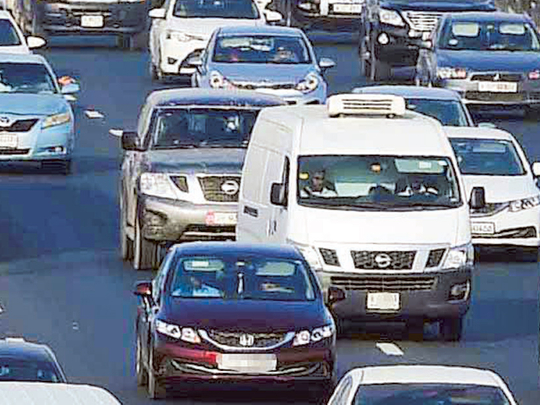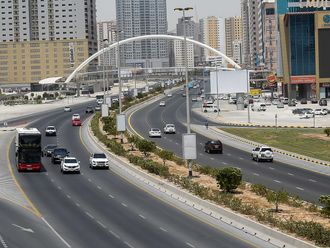
Dubai: More than 80 per cent of drivers in the UAE don’t use indicators when required, a survey has revealed.
The survey, one of several conducted by Road Safety UAE, also listed speeding, tailgating, lane swerving and lane jumping among the dangers on UAE roads.
Authorities have made efforts to make roads safer by imposing stringent penalities on offenders and enhancing driver training and road management, but there is some way to go still in instilling desired road discipline, experts said.
“The fundamental issue we are facing islack of road etiquette. We see that people lack basic courtesy towards others. That is why we at Road Safety UAE initiated the surveys to understand what was happening,” Thomas Edelmann, founder and managing director of Road Safety UAE, said.
Highlighting the findings of the surveys, he said that distracted driving is a key contributor to lane swerving, which is the leading reason for fatal traffic accidents.
Another major danger is drivers not using indicators, Edelmann said.
“We found that many people don’t use indicators because they don’t think it’s necessary, or it’s not part of the [driving] culture they come from. We also found that a large number of people don’t use the indicator because they think it’s a sign of weakness,” he said.
Another top killer is speeding, also a trigger for other misbehaviours.
“The survey revealed that a large percentage of people speed because they are running late. This one factor – running late – leads to several violations on the road like tailgating, jumping the red light, jumping the lane, etc. Just starting every trip 10 minutes early will reduce so many violations,” Edelmann said.
Rana Raddawi, head of the Department of English at American University of Sharjah, and an expert in emotional intelligence, believes that one way to develop a strong driving culture is to integrate road safety into the school curriculum.
“Three components have to come together to ensure safer roads in the UAE: Education, urban planning and law enforcement. We have good urban planning and infrastructure here, but where we lag is in education and law enforcement. We need to integrate road safety in the school curriculum,” Raddawi said.
She said that driving schools are doing their best, but it’s not enough.
Raddawi added that courses should be desgined for elementary school, junior, high school and university so that when the it is time for a person to take driving classes, he/she is ready with the basic knowledge.
Both Edelmanm and Raddawi stressed on the importance of stricter law enforcement.
“Authorities should find a way to enforcing the law smartly, rather than just issuing fines, which many people just pay and continue to commit the same violations. People should be made to realise their mistakes,” Edelmann said.
Giving an example, he said: “One of the issues we face here is a motorist jumping lanes, If a policeman happens to see him, he will definitely issue a fine. But a fine is not enough; the motorist has to be asked to pull over and made to realise his mistake. In the UK, the driver is pulled over and made to wait for a certain time, just to send home the message.”
Certain violations, Edelmann said, should lead to suspension of the driving licence for a period or the confisction of vehicle.
Raddawi agreed: “If there is a serious traffic violation, the driver should be sent for a quick brush-up course. If there is a repeat offence, the driver’s licence should be withheld.”
‘Schools must teach emotion intelligence’
Schools must include courses on emotional intelligence in their curriculum to build a healthy driving culture, Rana Raddawi, head of the Department of English at American University of Sharjah, and an expert in emotional intelligence, said.
According to statistics, 34 per cent of all deaths in traffic accidents involve young drivers, she pointed out.
Explaining the impact of emotions on driving, Raddawi said: “Every action is emotion-laden. Emotions are generated by internal and external factors and lead to different actions. In emotion intelligence training, we focus on four components — self awareness, self-control, social awareness and relationship management.
“Let’s say a person is stressed, or is getting late for his appointment. This will generate anxiety, anger and stress, which lead to actions like speeding, honking, tailgating, etc.”
In most cases, people are not aware that their feelings — positive or negative — are leading them to drive rashly, she said.
“Some youth want to show off, they seek thrill, ot an adrenaline rush, so they speed and perform stunts on the road. Emotional intelligence makes you aware that your actions will lead to a bad result,” Raddawi said.
Emotional intelligence also teaches you to put yourself in other peoples’ shoes, she added.
“It tells you how you would feel when you are subjected to the same treatment you meted out to others. Just as we have our loved ones waiting for us at home, others also have their loved ones waiting for them. [Emotional intelligence] makes you aware of consequences of [your action],” she said.












